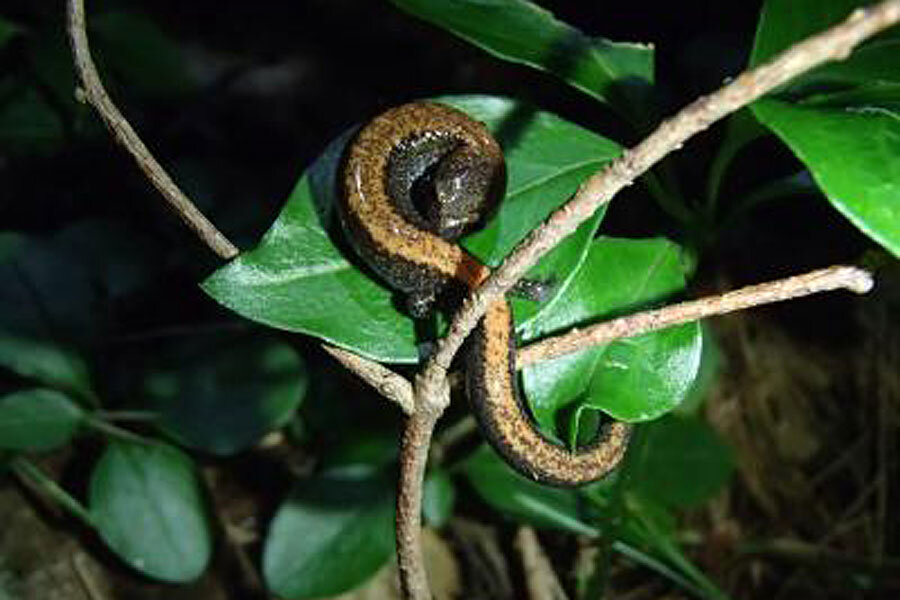Climate change makes salamanders shrink, scientists say
Loading...
Apparently now you can measure climate change in terms of salamander size.
A warmer and drier climate is causing wild Appalachian salamanders to shrink, according to a new paper titled "Widespread rapid reductions in body size of adult salamanders in response to climate change" published March 25 in the journal Global Change Biology.
It all started in 1980s, when University of Maryland herpetologist Richard Highton noticed a decrease in the population of salamanders within the Appalachian Mountains. Dr. Highton, who been studying salamanders within the region since 1957, has collected hundreds of thousands of salamanders. These specimens are now preserved in jars at the Smithsonian Institution's Museum Service Center in Suitland, Maryland.
Karen R. Lips, an associate professor of biology at the University of Maryland and the study's senior author, decided to find out why the population of salamanders were decreasing.
She initially suspected some kind of disease. A fungal disease called chytridiomycosis had caused a significant decline of frog populations in Central America, says Dr. Lips, and she thought there might be something similar affecting Appalachian salamanders, who, like frogs, are amphibians and prefer moist habitats.
Lips and her team examined some 16 different varieties of salamanders, and they ruled out disease. But they noticed something funny about the animals.
By comparing museum species of salamanders to the ones that were caught from the same sites between 2011 and 2012, the researchers concluded that salamanders within the Appalachian Mountains were actually shrinking. Their average body length (minus the tail) of these species ranges from 1.5 inches to 2.3 inches, says Lips. Some species showed a reduction of two percent while others shrank by seven or eight percent. One species shrank by as much as 18 percent.
"This is one of the largest and fastest rates of change ever recorded in any animal," Lips said in a press release. "We don't know exactly how or why it's happening, but our data show it is clearly correlated with climate change."
Researchers arrived at this conclusion after Clemson University biologist Michael W. Sears, who studies how climate change affects lizards, applied his methods to salamanders. By running a computer program that simulates the "minute-by-minute behavior of individual salamanders" based on weather conditions, the team concluded that there is a high probability that climate change is causing them to shrink.
Earlier studies, too, indicate that reptiles and amphibians can shrink when weather becomes warmer. As the temperature increases, so does their metabolic rate. To compensate for increased energy needs, the animals have to make some trade-offs. So they might shrink, becoming easier prey. The smaller females will also give birth to fewer offspring than their larger counterparts, Lips says.
"Right now we don't know what this means for the animals," Lips said. "If they can start breeding smaller, at a younger age, that might be the best way to adapt to this warmer, drier world. Or it may be tied in with the losses of some of these species."






